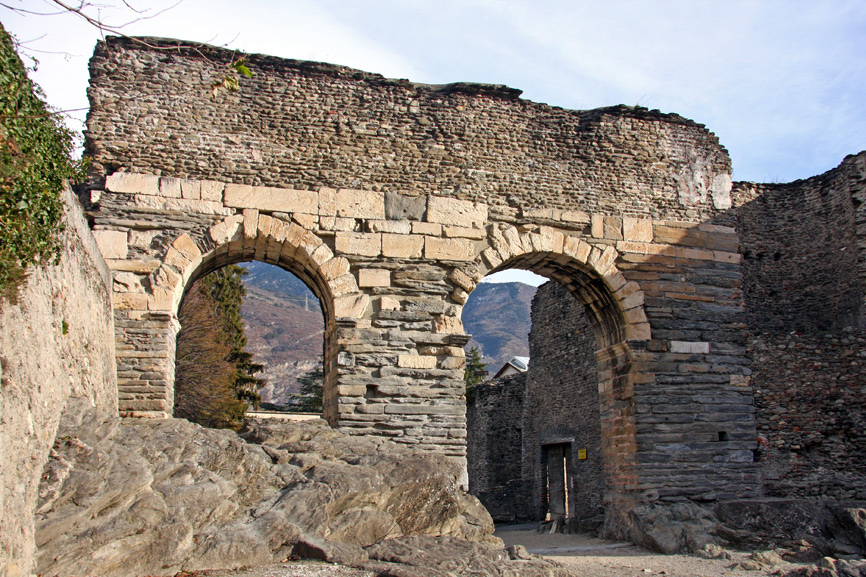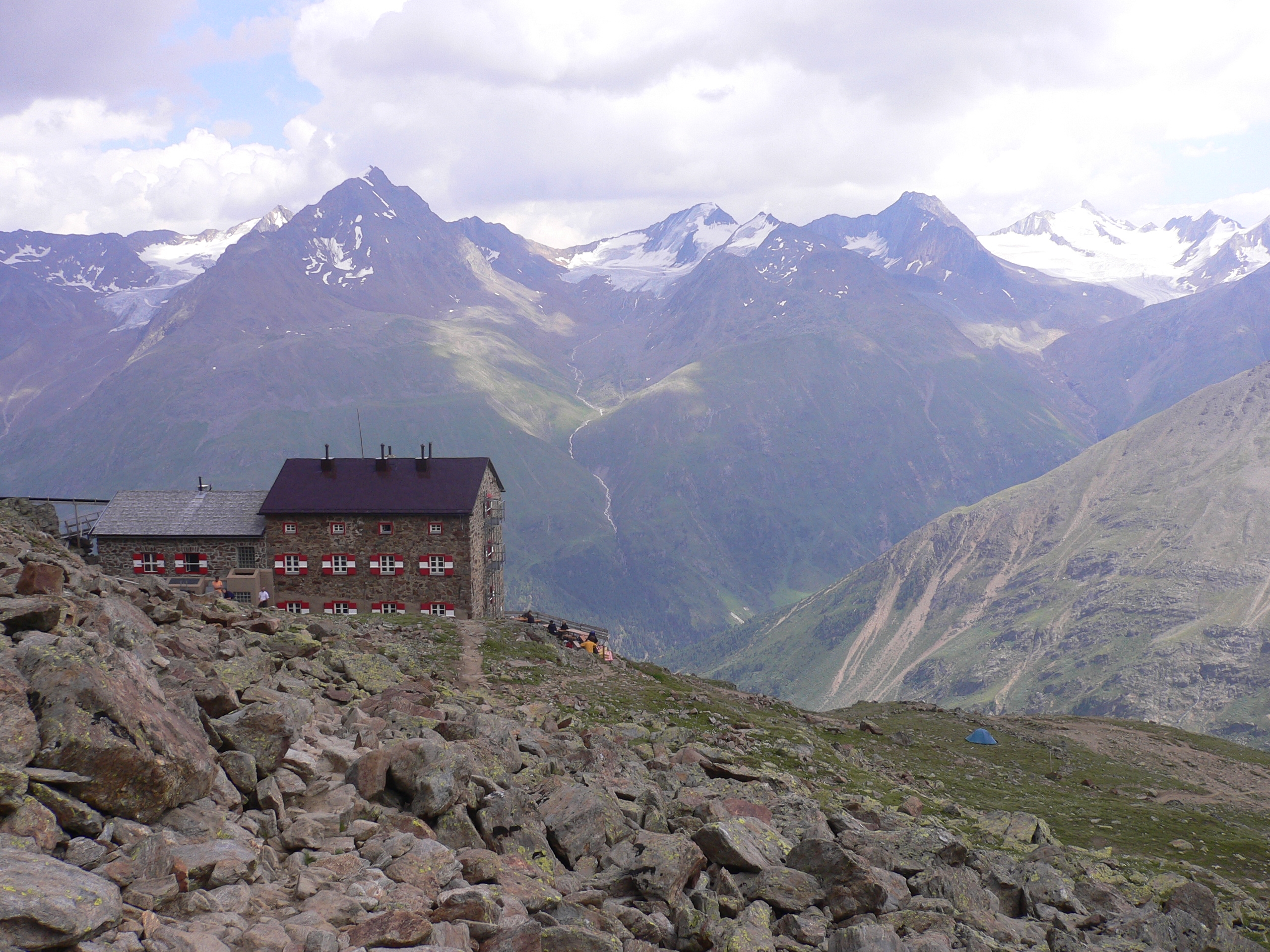|
Winter Room
A winter room (german: Winterraum) is found in mountain huts used by tourists that are not managed in the winter. The winter room, unlike the rest of the hut, is easily accessible and usually is either not locked or is accessible with an Alpine Club key. A winter room may be used by climbers and hikers in the winter who are self-contained. Usually there is a stove and wood to fire it with; often there is a table as well and somewhere to sleep. The nightly charge publicized on a poster in the hut is paid either by putting it in the money box of the winter room or may be bank-transferred directly to the branch of the Alpine Club that owns the hut. Most of the Alpine Club huts in the Alps The Alps () ; german: Alpen ; it, Alpi ; rm, Alps ; sl, Alpe . are the highest and most extensive mountain range system that lies entirely in Europe, stretching approximately across seven Alpine countries (from west to east): France, Swi ... have a winter room. External linksPicture of ... [...More Info...] [...Related Items...] OR: [Wikipedia] [Google] [Baidu] |
Karwendel
The Karwendel is the largest mountain range of the Northern Limestone Alps. The major part belongs to the Austrian federal state of Tyrol (state), Tyrol, while the adjacent area in the north is part of Bavaria, Germany. Four mountain chain, chains stretch from west to east; in addition, there are a number of fringe ranges and an extensive promontory (''Vorkarwendel'') in the north. Geography The term Karwendel describes the part of the Alps between the Isar river and the Seefeld Saddle mountain pass in the west and Achen Lake in the east. In the north it stretches to the Bavarian Prealps. In the south the Lower Inn Valley with the city of Innsbruck separates the Karwendel from the Central Eastern Alps. Other major settlements include Seefeld in Tirol and Mittenwald in the west, as well as Eben am Achensee in the east. Neighbouring ranges are the Wetterstein and Mieming Range, Mieming Mountains in the west and the Brandenberg Alps in the east. The mountaineer Hermann von Barth cre ... [...More Info...] [...Related Items...] OR: [Wikipedia] [Google] [Baidu] |
Cottian Alps
The Cottian Alps (; french: Alpes Cottiennes ; it, Alpi Cozie ) are a mountain range in the southwestern part of the Alps. They form the border between France (Hautes-Alpes and Savoie) and Italy (Piedmont). The Fréjus Road Tunnel and Fréjus Rail Tunnel between Modane and Susa are important transportation arteries between France (Lyon, Grenoble) and Italy (Turin). Etymology The name ''Cottian'' comes from '' Marcus Julius Cottius'', a king of the tribes inhabiting that mountainous region in the 1st century BC. Under his father Donnus, these tribes had previously opposed but later made peace with Julius Caesar. Cottius was succeeded by his son Gaius Julius Donnus II (reigned 3 BC-4 AD), and his grandson Marcus Julius Cottius II (reigned 5-63 AD), who was granted the title of king by the emperor Claudius. On his death, Nero annexed his kingdom as the province of Alpes Cottiae. History For a long part of the Middle Ages the Cottian Alps were divided between the Duchy of Savoy ... [...More Info...] [...Related Items...] OR: [Wikipedia] [Google] [Baidu] |
Mountain Hut
A mountain hut is a building located high in the mountains, generally accessible only by foot, intended to provide food and shelter to mountaineers, climbers and hikers. Mountain huts are usually operated by an Alpine Club or some organization dedicated to hiking or mountain recreation. They are known by many names, including alpine hut, mountain shelter, mountain refuge, mountain lodge, and mountain hostel. It may also be called a refuge hut, although these occur in lowland areas (e.g. lowland forests) too. Mountain huts can provide a range of services, starting with shelter and simple sleeping berths. Some, particularly in remote areas, are not staffed, but others have staff which prepare meals and drinks and can provide other services, including providing lectures and selling clothing and small items. Mountain huts usually allow anybody to access their facilities, although some require reservations. While shelters have long existed in mountains, modern hut systems date back ... [...More Info...] [...Related Items...] OR: [Wikipedia] [Google] [Baidu] |
Alpine Club Hut
Alpine club huts (german: Alpenvereinshütten) or simply club huts (''Clubhütten'') form the majority of the over 1,300 mountain huts in the Alps and are maintained by branches, or sections, of the various Alpine clubs. Although the usual English translation of ''Hütte'' is "hut", most of them are substantial buildings designed to accommodate and feed significant numbers of hikers and climbers and to withstand harsh high alpine conditions for decades. Purpose and facilities They provide hikers and climbers with accommodation and shelter, mainly in the Alpine region. The greater number of these huts are managed, several are only suitable for those able to be self-contained. Although fundamentally all those involved in mountain activities have access to the huts, preferential service is given to members of the Alpine clubs. These include: reduced accommodation rates, mountaineer's meals, hot water for tea, the right to provide one's own food and alcohol-free drink (sometimes for a ... [...More Info...] [...Related Items...] OR: [Wikipedia] [Google] [Baidu] |
Alps
The Alps () ; german: Alpen ; it, Alpi ; rm, Alps ; sl, Alpe . are the highest and most extensive mountain range system that lies entirely in Europe, stretching approximately across seven Alpine countries (from west to east): France, Switzerland, Italy, Liechtenstein, Austria, Germany, and Slovenia. The Alpine arch generally extends from Nice on the western Mediterranean to Trieste on the Adriatic and Vienna at the beginning of the Pannonian Basin. The mountains were formed over tens of millions of years as the African and Eurasian tectonic plates collided. Extreme shortening caused by the event resulted in marine sedimentary rocks rising by thrusting and folding into high mountain peaks such as Mont Blanc and the Matterhorn. Mont Blanc spans the French–Italian border, and at is the highest mountain in the Alps. The Alpine region area contains 128 peaks higher than . The altitude and size of the range affect the climate in Europe; in the mountains, precipitation ... [...More Info...] [...Related Items...] OR: [Wikipedia] [Google] [Baidu] |



